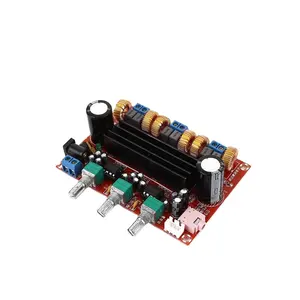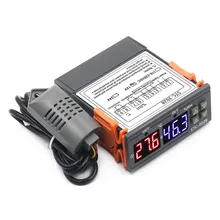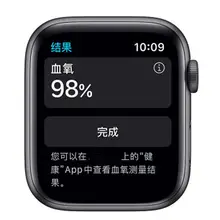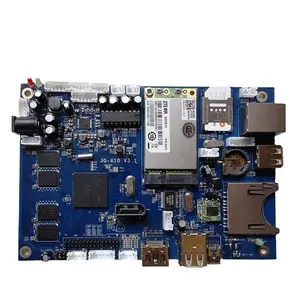What are Double-sided Pcb
Double-sided PCBs, or Printed Circuit Boards, are fundamental components in the world of electronics, acting as the backbone for supporting and interconnecting electronic components in a myriad of devices. These boards are crafted with a conductive layer on both sides, enabling circuits to traverse across both surfaces through plated through-holes. This dual-sided nature allows for more complex and denser circuit designs than what single-sided PCBs can offer, making them suitable for a wide range of applications.
Typically, the double-sided PCB is used by manufacturers and designers who require an intermediate level of circuit complexity. It is a go-to solution for electronics that demand more connectivity and functionality than what a single-sided board can provide but do not necessitate the complexity and cost of multilayer boards. By offering a middle ground, double-sided PCBs serve as an essential component in consumer electronics, industrial machinery, automotive components, and even medical devices.
The workings of a double-sided PCB are based on the principles of electrical circuits where electronic components are mounted on one side or both sides and are interconnected through the plated holes. These holes allow conductive paths to pass from one side to another, creating a versatile platform for various circuit configurations. The design and production of these boards involve precise etching of copper layers to create traces and pads, careful drilling of through-holes, and application of a solder mask to prevent short-circuits.
Types of Double-sided Pcb
The variety of double-sided PCBs available reflects their versatility in use across different sectors. Each type offers unique attributes tailored to specific applications:
FR4 Double-Sided PCB: This is the most common substrate used for double-sided PCBs. FR4 stands for Flame Retardant level 4, which is a glass-reinforced epoxy laminate that provides considerable mechanical strength and thermal resistance. It is widely used in consumer electronics due to its durability and cost-effectiveness.
Aluminum-based Double-Sided PCB: These boards employ an aluminum substrate that aids in heat dissipation, making them ideal for high-power applications such as LED lighting systems or power supplies. Their ability to maintain cooler temperatures enhances performance longevity.
ENIG-finished Double-Sided PCB: Electroless Nickel Immersion Gold (ENIG) finishing provides a thin layer of gold over nickel plating. This type offers exceptional conductivity and is often used in high-reliability applications where stable performance over time is crucial.
HASL-finished Double-Sided PCB: Hot Air Solder Leveling (HASL) is a traditional finish that involves coating the PCB with molten solder and then leveling it off with hot air. It provides a robust solderable surface suitable for multiple reflow cycles during component mounting.
How to choose Double-sided Pcb
Selecting the right double-sided PCB for your business requires careful consideration of several factors, ensuring that the board meets both technical requirements and commercial objectives. Here’s what businesses need to consider:
Base Material: The choice between aluminum or FR4 as base materials should be dictated by the thermal management needs of the final product. For environments or applications where heat dissipation is critical, aluminum-based PCBs might be preferable over FR4.
Surface Finishing: Depending on the application's reliability requirements, you might opt for ENIG finishing for its superior conductivity and oxidation resistance or HASL if cost-saving is vital and multiple reflows are anticipated.
Complexity and Density: Evaluate the complexity and density of the circuits that will be housed on the board. A double-sided PCB should provide sufficient space and connectivity without resorting to a more complex multilayer board if unnecessary.
Businesses looking to procure these boards should assess these factors while also considering potential suppliers' capabilities and certifications, ensuring that they receive a product that aligns with their specifications and quality expectations.
Best Double-sided Pcb on Alibaba.com
For businesses seeking reliable sourcing of double-sided PCBs, Alibaba.com stands out as an indispensable marketplace connecting buyers with experienced suppliers globally. With its vast selection spanning across various base materials like aluminum and FR4, surface finishes including ENIG and HASL, Alibaba.com caters to diverse industry needs while providing flexibility in order quantities - from bulk purchases to smaller quantities for specialized projects.
Navigating through Alibaba.com's extensive offerings is made seamless with intuitive search functionalities that allow buyers to filter results based on specific requirements. Moreover, Alibaba.com's Trade Assurance service mitigates risk by protecting payments until delivery confirmation, assuring businesses of their investment security.
Alibaba.com's commitment to fostering international trade simplifies the process of acquiring tailor-made double-sided PCBs regardless of geographic location. With its comprehensive tools and services designed to streamline online transactions, Alibaba.com empowers businesses to evolve their operations by procuring high-grade electronic components efficiently and confidently.
Common FAQs for Double-sided Pcb
What is a double-sided PCB?
A double-sided PCB is a printed circuit board that features conductive copper layers on both sides, allowing for more complex routing by connecting circuits through plated through-holes.
How do double-sided PCBs differ from single-sided PCBs?
Double-sided PCBs have conductive layers on both sides, offering more complex circuitry and connectivity options compared to single-sided PCBs, which only have one conductive layer.
What are the common materials used for double-sided PCBs?
The common base materials for double-sided PCBs are FR4, a glass-reinforced epoxy laminate, and aluminum, which is used for better heat dissipation in high-power applications.
What surface finishes are available for double-sided PCBs?
Common surface finishes for double-sided PCBs include ENIG (Electroless Nickel Immersion Gold) for enhanced conductivity and oxidation resistance, and HASL (Hot Air Solder Leveling) for a cost-effective solderable surface.
When should I choose an aluminum-based double-sided PCB?
Choose an aluminum-based double-sided PCB when your application requires efficient heat dissipation, such as in LED lighting systems or power electronics.
Can a double-sided PCB be used for high-reliability applications?
Yes, a double-sided PCB can be used for high-reliability applications, especially when finished with ENIG, which provides stable and reliable interconnections over time.
What factors should I consider when choosing a double-sided PCB?
Consider base material, surface finishing, complexity and density of the circuits, as well as the supplier’s manufacturing capabilities and certifications when selecting a double-sided PCB.
Are double-sided PCBs suitable for automotive applications?
Double-sided PCBs are indeed suitable for automotive applications due to their capacity to support a moderate level of complexity in electronic circuits while withstanding the demanding conditions of automotive environments.
How does the plating of through-holes work on a double-sided PCB?
Plating through-holes on a double-sided PCB involves depositing a thin layer of copper inside the drilled holes to create conductive paths between the top and bottom layers of the board.
Can double-sided PCBs be used in medical devices?
Yes, due to their reliability and ability to support complex circuit designs, double-sided PCBs are commonly used in a variety of medical devices.
What is the typical thickness of a double-sided PCB?
The thickness of double-sided PCBs can vary depending on design requirements but commonly ranges from 0.4mm to 3.2mm.
Is it possible to prototype with double-sided PCBs before mass production?
Prototyping with double-sided PCBs is possible and often recommended to validate design and functionality before proceeding with mass production.
How does the choice of base material affect the cost of a double-sided PCB?
The choice of base material can significantly affect the cost; FR4 is generally more cost-effective than aluminum which offers enhanced heat dissipation properties and may lead to higher costs.
Can I get custom-sized double-sided PCBs made?
Yes, suppliers can provide custom-sized double-sided PCBs tailored to specific design requirements and applications.
What quality certifications should I look for in a supplier of double-sided PCBs?
Look for suppliers with quality certifications such as ISO 9001, UL certification, and any industry-specific standards relevant to your product's application when sourcing double-sided PCBs.










































 浙公网安备 33010002000092号
浙公网安备 33010002000092号 浙B2-20120091-4
浙B2-20120091-4